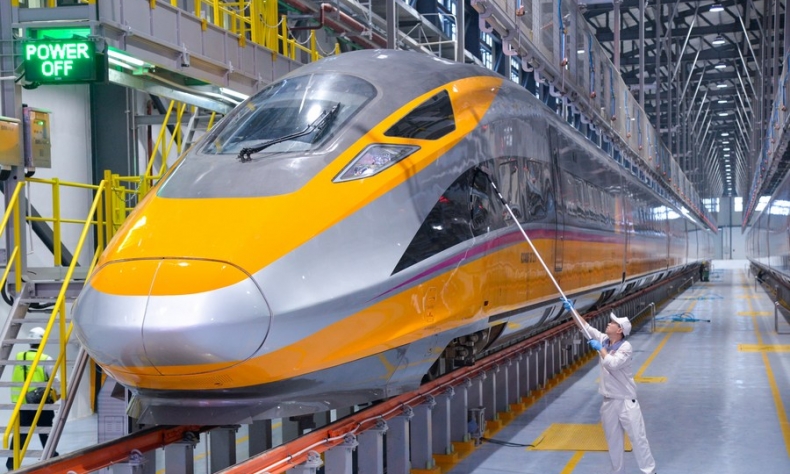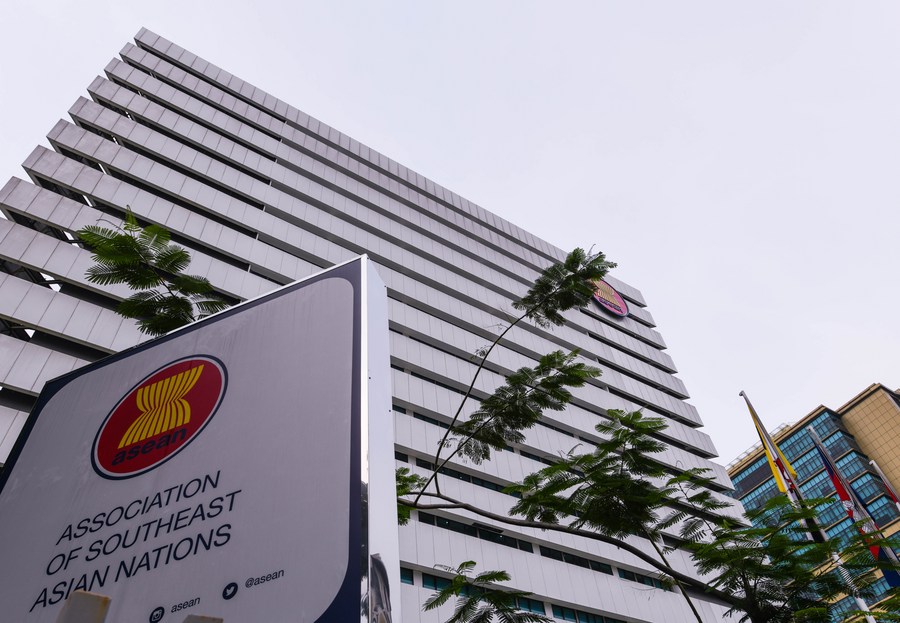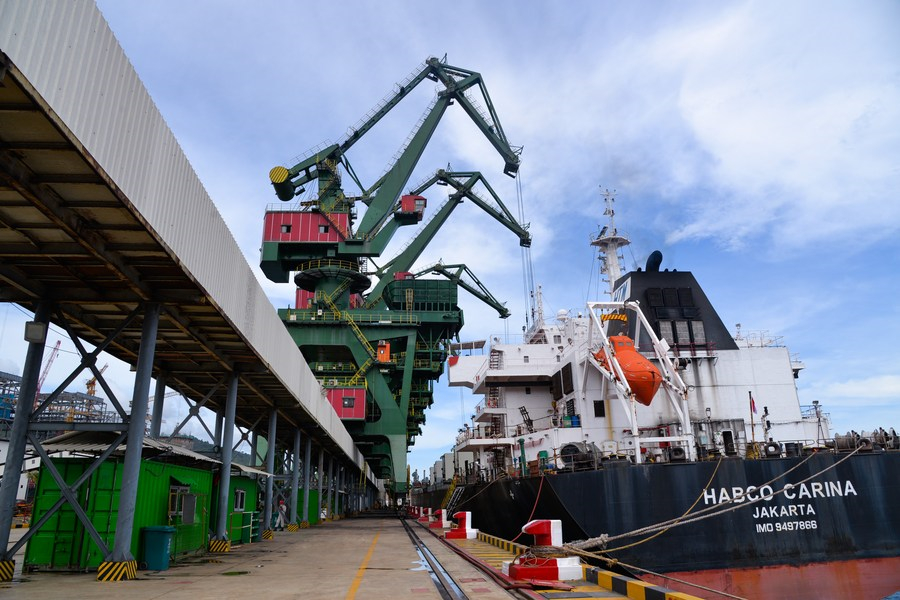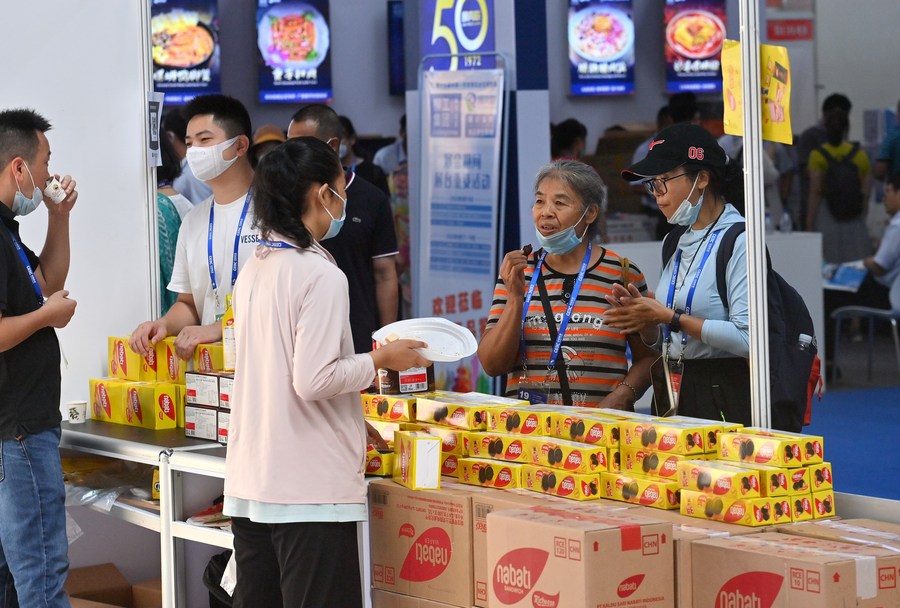Promoting High-Quality China-Indonesia Belt and Road Cooperation

Over the last decade since the introduction of the BRI, the growing China-Indonesia cooperation has released new drivers of growth for the development of the two countries.
Indonesia occupies an important position on the 21st Century Maritime Silk Road. Over the last 10 years since the Belt and Road Initiative (BRI) was first proposed, China and Indonesia have frequently interacted and cooperated under this framework to create new models of exchange and pool new drivers of growth. Every effort has been made to promote the orderly upgrading of their comprehensive strategic partnership.
New models of exchange
China and Indonesia are both developing countries with large populations. They are at similar stages of development and face similar development problems in the process of modernization. After diplomatic relations were restored in August 1990, bilateral cooperation between China and Indonesia shifted to a “fast track”. In April 2005, to mark the 55th anniversary of the establishment of diplomatic ties between the two countries and the 50th anniversary of the Bandung Conference, heads of state from the two countries signed Joint Declaration on Strategic Partnership in Jakarta, which designated bilateral relations as an “important pillar” strengthening the China-ASEAN strategic partnership and heralded a new era of partnership.
In October 2013, the China-Indonesia relationship was upgraded to a comprehensive strategic partnership as part of the efforts to build the 21st Century Maritime Silk Road. In June 2021, the China-Indonesia high-level dialogue cooperation mechanism was established for the two sides to synergize development strategies for Belt and Road cooperation. In October 2018, governments of the two countries signed a Memorandum of Understanding (MoU) on jointly promoting cooperation within the framework of BRI and GMF (Global Maritime Fulcrum) and renewed the document after the leaders’ meeting in July 2022.

In recent years, building a China-Indonesia community with a shared future has become the common aspiration and expectation of the people of the two countries. Over the last decade, leaders of the two countries have met and exchanged views frequently, summarized the experience and results of bilateral cooperation with joint statements, action plans, memoranda of understanding and other documents, and designed a blueprint for China-Indonesia community with a shared future. In November 2022, Chinese President Xi Jinping and Indonesian President Joko Widodo held talks in Bali, where they reached an important consensus on striving to build a China-Indonesia community with a shared future. In a joint statement, the two sides set the direction for cooperation on sustainable development under the framework of the Global Development Initiative (GDI), especially in fields of poverty reduction, rural revitalization, and development-oriented financing.
Facing profound changes rarely seen in a century, China and Indonesia have continuously optimized the internal and external environment for Belt and Road cooperation through bilateral and multilateral channels. China supported Indonesia’s late-2022 assumption of the presidency of the G20 Bali Summit focused on the theme of “Recover Together, Recover Stronger.” Both countries have made efforts to strengthen regional cooperation under the framework of the Regional Comprehensive Economic Partnership (RCEP) to counter the backlash against globalization and drive regional and global economic growth. Indonesia has also influenced other ASEAN countries to engage in greater cooperation with China. In 2023, Indonesia holds the rotating chair of ASEAN. Indonesian Foreign Minister Retno Marsudi indicated that Indonesia plans to increase negotiations with China and other Southeast Asian countries to finalize the Code of Conduct in the South China Sea (COC). From March 8 to 10, representatives of China and ASEAN member states held the 38th meeting of the ASEAN China Joint Working Group on the implementation of the Declaration on the Conduct of Parties in the South China Sea (DOC) in the Indonesian capital Jakarta to advance consultations on the text of the COC.
New drivers of growth
Synergy between national development strategies is driving policy. The massive size of Chinese and Indonesian markets provides many platforms for the two sides to synergize development strategies and find many areas of cooperation. Both the BRI and Indonesia’s national development strategy are committed to promoting sustainable economic and social development. Synergy between national development strategies has become a driver of bilateral cooperation policy.

Integration of the industrial and supply chains is driving development. In January 2021, China and Indonesia signed an MoU on the “Two Countries, Twin Parks” cooperation project which commenced construction of the core area of the 21st Century Maritime Silk Road. “Two Countries, Twin Parks” is an intergovernmental bilateral cooperation project. Yuanhong Investment Zone in Fuzhou, Fujian Province, has been designated as the Chinese park, and Bintan Industrial Estate, Aviarna Industrial Estate, and Batang Industrial Estate have been collectively designated as the Indonesian park. The project’s aim is to promote connectivity in industry, infrastructure, and policy. In September 2022, the “China-Indonesia ‘Two Countries, Twin Parks’ Industrial Cooperation Plan” passed expert review. The plan suggested the two sides build five transnational cooperation industrial chains for marine fishery, tropical agriculture, light industry and textiles, machinery and electronics, and green mining to facilitate industrial cooperation between the two countries. Bilateral supply chain cooperation has been deepened. The two countries’ close ties in investment and trade and cooperation in regional connectivity have focused on inclusive development and optimizing the advantages of aggregation for economies of scale through integration of industrial and supply chains. In September 2022, China joined five other countries including Indonesia, Chile, Cuba, Pakistan, and Serbia to propose the Initiative of International Cooperation on Resilient and Stable Industrial and Supply Chains to promote cooperation on strengthening the security of global industrial and supply chains. The parties asked all countries to join them in a “more equitable, inclusive and constructive partnership” for industrial and supply chains and emphasized strengthening “industrial ecological cooperation” and supporting cooperation between enterprises in the upstream and downstream of industrial chains to maintain the resilience and stability of industrial chains. In February 2023, Chinese Foreign Minister Qin Gang visited Indonesia and met with President Joko Widodo. The two sides stressed the importance of expanding cooperation in industrial chains, new energy industry, and other areas. The Chinese side also expressed the willingness to import more commodities and high-quality agricultural and fishery products from Indonesia.
Green development is driving regional and global governance. Way back in 2013, the China Meteorological Administration and the Indonesian Agency for Meteorology, Climatology and Geophysics signed an MoU to collaborate on sustainable climate-friendly development. Since then, the meteorological departments of the two countries have met the cooperation demands for inclusive development including instrument comparison, personnel training, expert visits, and data sharing. Promotion of high-quality Belt and Road cooperation has created new historic opportunities for cooperation and development between China and ASEAN and between China and Indonesia. In the process of Belt and Road cooperation, Chinese enterprises have always been active practitioners of the new development concept. China Energy Investment Corporation has invested in the construction of three efficient and environmentally friendly power stations in Indonesia. Other Chinese energy enterprises including Power Construction Corporation of China and Energy China Gezhouba International Engineering Company have been successively contracted to build photovoltaic power generation and pumped storage power station projects in Indonesia, which have helped Indonesia ensure its own energy supply and clean energy supply. In recent years, the two countries have also organized several energy forums to comprehensively strengthen bilateral energy cooperation. In 2017, they signed an MoU on energy cooperation.

Building a community with a shared future is driving sustainability. In February 2023, China and Indonesia reached consensus at the 4th meeting of the Joint Commission on Bilateral Cooperation that they would synergize development strategies and consolidate the new synergy through four-pillar cooperation covering politics, economy, people-to-people exchanges, and maritime projects. China has been Indonesia’s largest trading partner for 10 years in a row. In 2019, it became Indonesia’s second largest source of foreign investment. According to statistics from the Chinese Ministry of Foreign Affairs, bilateral trade between China and Indonesia reached US$149.1 billion in 2022, up 19.8 percent year on year, and Chinese investment in Indonesia reached US$8.19 billion. The official entry into force of the RCEP agreement and the formal establishment of a comprehensive strategic partnership between China and ASEAN helped the strategic synergy between China and Indonesia advance alongside China’s cooperation with neighboring countries. The China-Indonesia community with a shared future is also an important part of the China- ASEAN community with a shared future. As the founding member of ASEAN and the largest economy in Southeast Asia, Indonesia actively participated in drawing the blueprint for ASEAN’s regional connectivity and sustainable development. In June 2019, ASEAN released the ASEAN Outlook on the Indo-Pacific (AOIP).
In March 2022, China and Indonesia decided to promote alignment of the BRI with the AOIP and set up a model of sincere cooperation between major developing countries. At the G20 Bali Summit, President Xi Jinping spoke highly of the “Recover Together, Recover Stronger” vision for future cooperation. He called on participating countries to work together to make global development more resilient. As the rotating chair of ASEAN in 2023, Indonesia will undoubtedly continue to promote the simultaneous construction of the ASEAN Community and the China- ASEAN community with a shared future.
Over the last decade since the introduction of the BRI, the growing China-Indonesia cooperation has released new drivers of growth for the development of the two countries. Aggregation of the new drivers of growth has in turn injected new impetus into the development of new models, which will benefit construction of China-Indonesia and China-ASEAN communities with a shared future.
Zhai Kun is a professor at the School of International Studies at Peking University.
Shao Zhicheng is a Ph.D. student at the Institute of Area Studies at Peking University.
 Facebook
Facebook
 Twitter
Twitter
 Linkedin
Linkedin
 Google +
Google +










